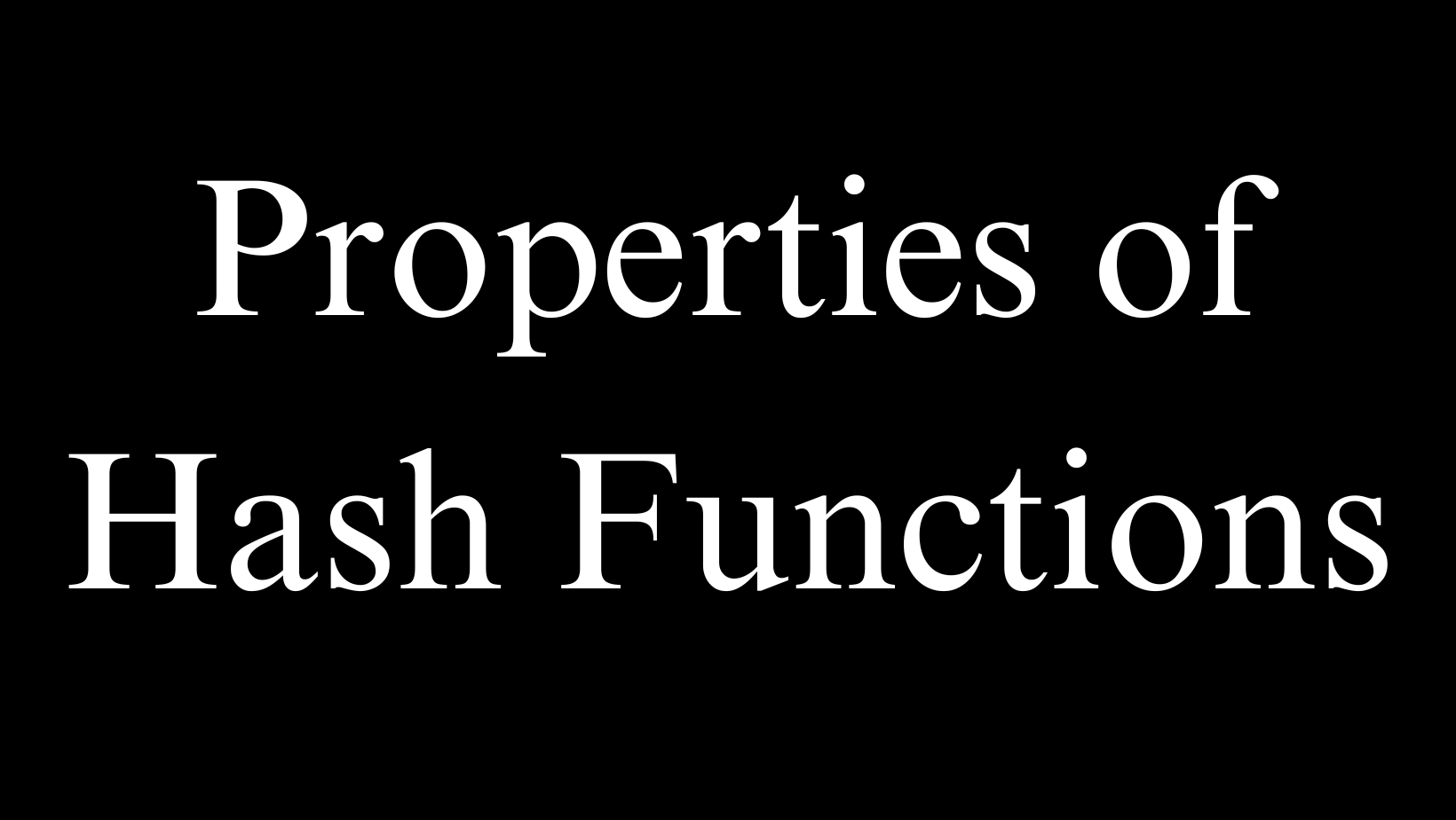Properties of Hash Functions: Unlocking the Secrets Behind Hashing
 James Mathenge
James Mathenge
In the previous article, we introduced the concept of hashing and hash functions. We learned that hash functions are algorithms that take an input and generate a unique fixed-size string output called a hash value.
But what makes an effective hash function? Hash functions have certain desirable properties that make them exceptionally useful across a wide range of applications. In this article, we'll uncover the key properties that characterize secure and efficient hash functions
What Makes a Good Hash Function?
Cryptographers and computer scientists have identified several properties that are crucial for an ideal hash function:
1. Determinism
Determinism means that the same input will always produce the same hash value as the output. In other words, the hash function consistently generates the same unique hash value for a given input.
This property is fundamental because applications like digital signatures, data integrity checks, and password storage all depend on the hash function output being identical for identical inputs. Even the slightest change in the input data should produce a completely different hash value.
2. Uniformity
A hash function should generate hash values that are uniformly distributed across the entire output range. The hash values should appear random and unpredictable.
Uniformity minimizes collisions, which are instances where two different inputs generate the same hash value. A uniform distribution of hash values makes it difficult to deliberately engineer inputs that collide.
3. Efficiency
Hash functions should be efficient to compute even for large inputs. The algorithms run in a reasonable time frame even for large amounts of data.
Fast computation ensures real-time performance and responsiveness when hashing large files or data streams. It also thwarts denial of service attacks using intentionally slow hash functions.
4. One-Way Operation
Hash functions are one-way operations, meaning that it is easy to compute the hash value from an input but practically infeasible to determine the original input from a hash value.
One-wayness is derived from the loss of information when converting variable length inputs to a fixed length hash output. This property prevents reversing the hashing process to retrieve input data like passwords.
5. Avalanche Effect
A small change in the input, even just a single bit flip, should produce a significantly different hash value. This difference should propagate extensively throughout the bits of the hash value.
The avalanche effect makes the hash function very sensitive to changes in input data. It amplifies even minor differences into an entirely different hash output.
Why are these properties important?
These properties directly enable the key practical applications of hash functions:
Verifying Data Integrity - Determinism allows the detection of unauthorized data changes by comparing hash values before and after transmission or storage.
Storing Passwords - One-way operation prevents reversing the hash to obtain the original password.
Efficient Indexing - Uniformity minimizes collisions allowing efficient retrievals from hash tables.
Message Authentication - Any change in input data produces different hash outputs ensuring authenticity.
Detecting Malicious Files - Identical files yield the same hash value which helps flag modified malware versions.
Without these essential properties, hash functions would be ineffective and vulnerable to real-world uses.
Hash Function Types
There are several categories and types of hash functions, each with their own strengths:
Cryptographic Hash Functions - Optimized for cryptographic purposes like digital signatures. Highly secure against collisions and pre-image attacks attempting to reverse the hash. Examples are SHA-2, SHA-3, and BLAKE2.
Non-Cryptographic Hash Functions - Used in hash tables and databases for efficient lookups and retrieval. Prioritize performance over cryptographic strength. Some examples are Fowler–Noll–Vo hash and FNV-1a.
Universal Hashing - A randomized technique to uniformly distribute keys in hash tables minimizing collisions. Uses random seed values to randomize the allocation of keys to hash table slots.
Keyed Hash Functions - Uses a secret key together with the input message to compute the hash value. The key provides an added layer of security and prevents unauthorized parties from computing the correct hash value. Examples include HMAC based on cryptographic hash functions.
Hash Function Security
Since hash functions play an integral role in security systems, their design requires careful analysis against potential vulnerabilities. Some common security threats include:
Collision Attacks - Finding two inputs with the same hash value. Allows forged data to appear identical to the original.
Preimage Attacks - Finding an input that generates a given hash value. Can reconstruct passwords from their hashed versions.
Birthday Attacks - Exploiting probability theory to find any pairs of colliding messages.
Length Extension Attacks - Tricking applications into signing unauthorized messages using the original hash value.
Robust hash functions utilize large output lengths, randomization techniques, and internal compression functions to guard against such attacks.
Later in this series, we'll go through real-world examples using popular hash functions like SHA-256 and MD5. We'll also demonstrate firsthand how altering input data changes the resulting hash value.
Hash functions are fundamental primitives that enable a vast array of critical applications in computer science and cryptography through their special properties. Understanding these properties provides valuable insight into the design of secure and efficient hash functions.
Continue Reading About Hashing
Subscribe to my newsletter
Read articles from James Mathenge directly inside your inbox. Subscribe to the newsletter, and don't miss out.
Written by

James Mathenge
James Mathenge
A highly skilled professional dev who possesses a unique combination of expertise in both Finance and Software Development